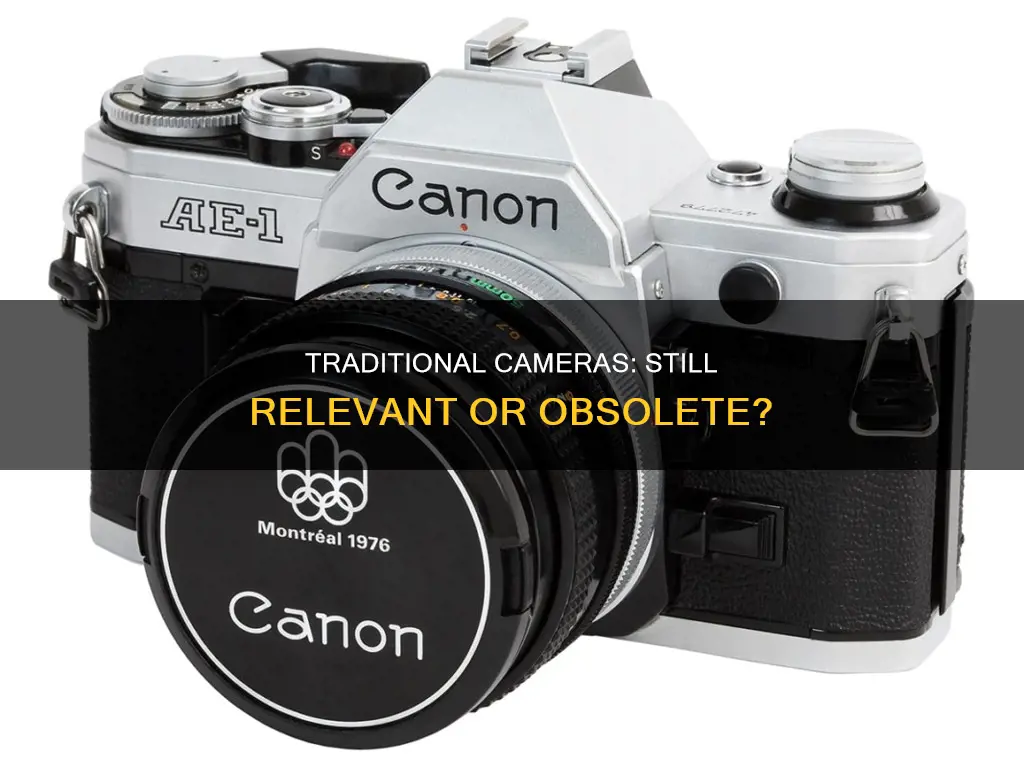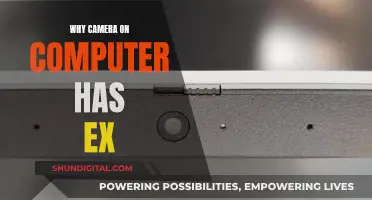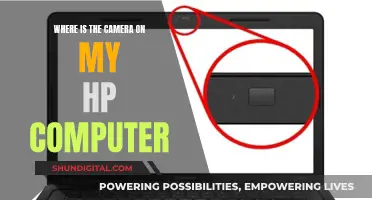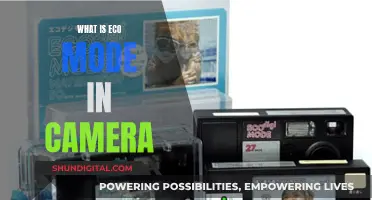
The history of the camera is a long and fascinating one, dating back to the camera obscura in the 1500s. Over the centuries, camera technology has evolved from daguerreotypes and calotypes to digital cameras and camera phones. But what about traditional cameras? Are they still being made?
The simple answer is yes, traditional cameras are still being made. While the market for film cameras has declined significantly in recent years, there is still a demand for these classic devices. Some photographers prefer the look and feel of film cameras, and analogue photography has experienced a resurgence in recent years. Additionally, some film cameras may offer features that are not yet available on digital models, such as large-format photography or specialised functions for scientific research.
However, the production of film cameras is not as widespread as it once was. The rise of digital cameras and camera phones has led to a decline in the film camera industry, particularly in the US, Western Europe, and the UK. Today, most major camera brands focus their efforts on digital models, and film cameras often mimic Western designs.
| Characteristics | Values |
|---|---|
| History of traditional cameras | The history of traditional cameras dates back to the 19th century, evolving from the camera obscura to the daguerreotype, calotype, dry plates, and film. |
| First photographic camera | The first photographic camera was invented by Joseph Nicéphore Niépce in 1826, using a sliding wooden box camera. |
| Kodak's role | Kodak, a key player in the industry, introduced its first camera, the "Kodak," in 1888, which was a simple box camera with pre-loaded film. |
| Digital camera history | The idea of digital cameras emerged in 1961, but the first prototype was developed by Kodak's Steven Sasson in 1975. |
| Transition to digital | The transition from film to digital photography occurred in the late 20th century, with digital camera sales surpassing film cameras in the US by 2003. |
What You'll Learn

What are traditional cameras?
Traditional cameras, also known as analog cameras, capture images by exposing photographic film to light. The scene in front of the lens is reproduced onto the film material through a chemical reaction between silver halides and light. The film is then developed in a darkroom and turned into a photographic print. This process is complex and time-consuming, but many photographers enjoy the challenge.
Analog cameras can be tricky to work with as they require careful selection of images, as one does not want to waste film. Additionally, there is no option to crop out unwanted elements or adjust the exposure of a dark image unless a film scanner is used.
There are several types of traditional cameras, each with unique features and capabilities. Single-lens reflex (SLR) cameras are the analog equivalent of DSLR cameras, offering real-time, exact imaging through the lens and the ability to swap lenses. Twin-lens reflex (TLR) cameras are equipped with double objective lenses of identical focal lengths, allowing the scene to be continuously displayed on the viewfinder screen without "blackout". Rangefinder cameras calculate distance through triangulation for accurate focusing, while point-and-shoot cameras are simple, lightweight, and often disposable or one-time-use. Large format cameras offer higher resolution and are often used in professional and artistic photography, while compact cameras are known for their portability and ease of use.
The evolution of traditional cameras began with the camera obscura, a natural optical phenomenon, and progressed through various generations of photographic technology, including daguerreotypes, calotypes, dry plates, and film. The first photographic camera was created in 1826 by Joseph Nicéphore Niépce, using a sliding wooden box camera. Over time, cameras became increasingly compact, and the introduction of film in the late 19th century led to a shift towards smaller and more cost-effective models.
While traditional cameras have largely been replaced by digital cameras and smartphone cameras, they continue to hold a place in the hearts of many photographers, with some professionals and amateurs still opting for their unique qualities and the creative process they entail.
The Evolution of Wyze Cameras: Battery or Plug-In?
You may want to see also

Are traditional cameras still made?
The history of the camera began even before the introduction of photography. The camera obscura, the precursor of the photographic camera, is a natural optical phenomenon named after its Latin translation, "dark room". The earliest documented explanation of this principle comes from Han Chinese philosopher Mozi (c. 400 BC).
The first photographic camera developed for commercial manufacture was a daguerreotype camera, built by Alphonse Giroux in 1839. Giroux signed a contract with Louis Daguerre and Isidore Niépce to produce the cameras in France, with each device and its accessories costing 400 francs.
The invention of the camera dates back to the 19th century and has since evolved with advancements in technology, leading to a vast array of types and models in the 21st century. The transition to digital photography marked the late 20th century, with digital camera sales surpassing film cameras in the United States by 2003.
The first prototype digital camera was developed by Steven Sasson, an engineer at Eastman Kodak, in 1975. The resulting camera was the size of a printer and weighed nearly 4 kilograms. It captured black-and-white images on a digital cassette tape.
Today, most cameras are digital and are incorporated into many devices ranging from mobile phones to vehicles. However, traditional film cameras are still being made and used by photographers who prefer the unique qualities of film photography. Some photographers appreciate the tactile experience of loading and developing film, while others value the distinctive look and feel of film images.
Film cameras that are still in production include the Leica M-A, the Nikon F6, the Canon EOS-1v, and the Fujifilm GF670. These cameras offer features such as manual focus, film advance, and interchangeable lenses, catering to photographers who prefer the analogue process.
In conclusion, while digital cameras have become the dominant form of photography, traditional film cameras continue to be made and used by a dedicated community of photographers who appreciate the unique qualities and experience that film has to offer.
Cleaning Your Adorcam Camera Charging Port: A Step-by-Step Guide
You may want to see also

What are the advantages of traditional cameras?
Traditional cameras, or film cameras, have several advantages over their digital counterparts. Firstly, the upfront cost of a traditional camera is significantly lower than that of a modern digital camera or DSLR. This makes it an attractive option for amateur photographers or those who are just starting out in photography. The lower cost allows users to experiment and learn about photography without breaking the bank.
Secondly, traditional cameras offer a higher dynamic range, capturing finer details and richer, more vibrant colours compared to digital cameras. Film is also more forgiving of minor focusing issues and exposure problems, allowing photographers more room for error. Additionally, film captures photos at a higher resolution than most digital cameras, resulting in sharper and more detailed images.
Another advantage of traditional cameras is their longevity and future-proofing. Traditional film cameras do not become obsolete like digital cameras, which often have a shorter lifespan due to technological advancements. Film cameras are also not dependent on power or batteries, making them ideal for long trips and cold conditions where digital cameras may struggle.
Lastly, traditional cameras encourage photographers to be more thoughtful and intentional with their shots. With a limited number of exposures on a roll of film, photographers must consider their images more carefully before shooting. This slower and more deliberate process can lead to more meaningful and carefully crafted photographs.
Olympus E-M5 II: How Many Shots Per Battery Charge?
You may want to see also

What are the disadvantages of traditional cameras?
Traditional cameras, or film cameras, have several disadvantages when compared to their digital counterparts. Here are the key drawbacks:
High Costs and Inconvenience
One of the main disadvantages of traditional cameras is the cost and inconvenience associated with film. Users have to purchase film rolls, get them developed, and pay for the processing, which can amount to around $10 per roll. Additionally, getting the film developed requires a trip to a photo lab or using a mail service, which can be time-consuming.
Manual Adjustments
Unlike modern digital cameras, traditional cameras require users to manually adjust various aspects of the camera, such as aperture, shutter speed, and focus. While professionals may master these techniques, it can be a tedious process for amateur photographers. Digital cameras, on the other hand, often have an auto function that delivers impressive results without any manual adjustments.
Lack of Instant Results
With traditional cameras, there is no instant gratification as users have to wait for the film to be developed to see the results. This process can be exciting for hobbyists, but it does not offer the convenience of instantly capturing and sharing moments, as is possible with digital cameras and smartphones.
Limited Flexibility
Traditional cameras are limited by the length of the film roll and the number of exposures it can capture. Once the film roll is finished, users have to replace it with a new one, which can be inconvenient, especially when on the move or in remote locations.
Data Loss and Theft
Traditional cameras rely on memory cards or film to store images, which can be vulnerable to damage, corruption, or theft. This can result in data loss, and retrieving stolen cameras or footage can be challenging without GPS or cellular capabilities.
Inaccessibility
Accessing images captured on traditional cameras requires physical access to the camera or memory card. This can be inconvenient and time-consuming, especially when compared to digital cameras that allow remote access to footage from anywhere with an internet connection.
Alone Contestants' Camera Battery Charging Strategies
You may want to see also

What is the future of traditional cameras?
Traditional cameras have evolved significantly since their invention, with the 19th century seeing the transition from camera obscura to complex photographic cameras. The 20th century then saw the rise of digital cameras, which have since become commonplace with the integration of cameras into smartphones.
The future of traditional cameras is difficult to predict, but it is likely that digital cameras will continue to dominate the market. Digital cameras offer several advantages over traditional film cameras, including the ability to review and edit images immediately, higher resolution, and easier sharing and storage of photos. Additionally, digital cameras are more cost-effective in the long run, as there is no need to purchase film or pay for film development.
However, there may still be a place for traditional film cameras in certain niches. Film cameras can produce unique visual effects that are difficult to replicate digitally, and some photographers prefer the tactile experience of using a film camera. Additionally, film cameras may be more durable and reliable in certain situations, such as in extreme weather conditions or remote locations without access to electricity or Wi-Fi.
The future of traditional cameras may also depend on the advancements in smartphone camera technology. As smartphone cameras continue to improve in quality and functionality, it is possible that they could further encroach on the market for dedicated cameras, both digital and film. On the other hand, if smartphone cameras reach a point of diminishing returns in terms of quality and functionality, dedicated cameras may see a resurgence as consumers seek even higher-quality images and more advanced features.
In conclusion, while it is difficult to predict the future of traditional cameras, it is likely that digital cameras will continue to be the most popular option due to their convenience, affordability, and image quality. However, film cameras may still retain a dedicated following among niche groups, and advancements in smartphone camera technology could also impact the market for dedicated cameras.
Yi Camera: Battery or Direct Power?
You may want to see also
Frequently asked questions
Traditional cameras use photographic film to capture and store images. The film is a light-sensitive material that records an image when light passes through the camera lens.
Yes, traditional film cameras are still being made. However, they are not as common as digital cameras, which have become more popular due to their convenience, lower operating costs, and ability to store images digitally.
Some examples of traditional film cameras include the Kodak Brownie, the Polaroid Model 95, and the Canon RC-701. These cameras were popular in the 20th century before digital cameras became prevalent.







